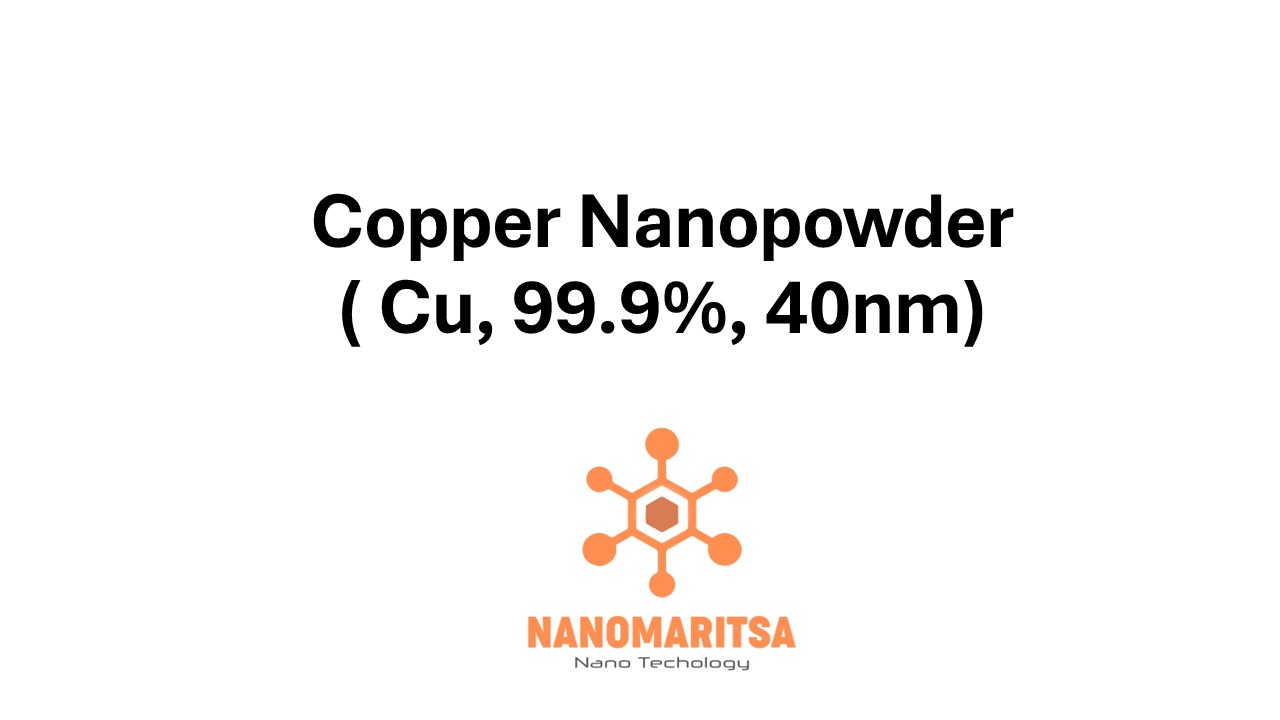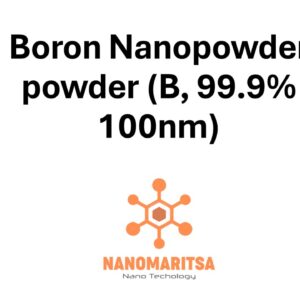Copper Nanopowder (Cu, 99.9%, 40 nm) is a high-purity material with a particle size of 40 nanometers (nm), offering exceptional conductivity, corrosion resistance, and reactivity that make it ideal for a wide range of advanced applications in various industries. With a purity of 99.9%, this copper nanopowder ensures minimal impurities, providing reliable performance and superior material properties for high-precision applications. Below is a comprehensive overview of its key features, properties, and applications:
Key Features:
Copper (Cu):
Copper is a well-known metal with excellent electrical and thermal conductivity, corrosion resistance, and malleability. Copper nanopowder maintains these properties at the nanoscale while offering enhanced surface area and reactivity, making it valuable for a variety of industrial and technological applications.
Purity (99.9%):
The 99.9% purity level of this copper nanopowder ensures a high degree of material consistency and reliability, with minimal impurities that could affect the performance or quality of the powder. The high purity is critical for applications where precise material characteristics are essential, such as in electronics, catalysis, and energy storage.
Particle Size (40 nm):
With a particle size of 40 nm, this copper nanopowder offers a balance between high surface area and material stability. The fine particle size enhances the powder’s reactivity and facilitates efficient dispersion in various applications, while still maintaining the bulk properties of copper.
Properties:
Electrical Conductivity:
Copper is widely known for its excellent electrical conductivity, making it a vital material in electrical and electronic components. Copper nanopowder maintains these conductivity properties at the nanoscale, making it suitable for high-performance applications in electronics, energy storage, and conductive inks.
Thermal Conductivity:
Copper is also an excellent conductor of heat, which is retained in its nanopowder form. This makes copper nanopowder valuable in applications where efficient heat dissipation is necessary, such as in cooling systems, heat exchangers, and thermal management materials.
Corrosion Resistance:
Copper is naturally resistant to corrosion, particularly in environments where moisture or exposure to air can cause oxidation. Copper nanopowder offers enhanced corrosion resistance compared to bulk copper, making it ideal for use in harsh environmental conditions, including marine, chemical, and industrial settings.
High Surface Area:
The nanopowder form of copper has an increased surface area compared to bulk copper, which enhances its reactivity. This property is advantageous in catalytic applications, where surface interactions are key to improving reaction rates and product yields.
Malleability and Ductility:
Despite being in nanopowder form, copper retains its malleability and ductility, allowing it to be easily shaped or integrated into other materials. This makes it useful for a variety of applications that require flexibility or the ability to be processed into thin films or composites.
Chemical Stability:
Copper nanopowder is chemically stable, which means it can be used in a variety of chemical environments without degradation. Its stability also makes it useful in processes where the material must withstand high temperatures or reactive chemicals.
Applications:
- Electronics and Conductive Inks:
Copper nanopowder’s excellent electrical conductivity makes it an ideal material for use in electronic components, including printed circuit boards (PCBs), conductive inks, and sensors. It is used in the manufacture of flexible electronics, wearable devices, and advanced displays, where high conductivity is crucial. - Energy Storage and Batteries:
Copper nanopowder is employed in the production of electrodes for lithium-ion batteries and supercapacitors. The powder’s high surface area improves the efficiency of energy storage devices by providing more active sites for energy exchange. It also contributes to enhancing charge-discharge rates and cycle life. - Catalysis and Chemical Synthesis:
Copper is a known catalyst for a variety of chemical reactions, including hydrogenation, oxidation, and polymerization. Copper nanopowder is used in catalytic processes, such as in the production of fine chemicals, fuels, and in environmental applications for reducing pollutants. Its increased surface area allows for more efficient catalytic activity. - Thermal Management:
Copper nanopowder is used in thermal management applications where heat dissipation is critical, such as in electronic devices, heat exchangers, and cooling systems. Its high thermal conductivity ensures that heat is effectively transferred away from sensitive components, improving overall system performance and longevity. - Coatings and Plating:
Copper nanopowder is used in electroplating and coatings due to its excellent conductivity and corrosion resistance. It is applied in the manufacture of corrosion-resistant coatings for metal components, as well as in the production of copper-based alloys that offer enhanced mechanical properties and durability. - Wear-Resistant Materials and Composites:
Copper nanopowder is used to enhance the wear resistance of materials, particularly in automotive and industrial applications. It is integrated into composite materials, such as in brake pads, where its high thermal conductivity and strength improve the overall performance of the component. - Antimicrobial and Antibacterial Applications:
Copper is known for its antimicrobial properties, and copper nanopowder is being explored for use in medical and hygiene applications. It can be incorporated into surfaces, fabrics, and coatings to reduce the growth of bacteria, fungi, and viruses, making it suitable for use in medical devices, water purification, and healthcare settings. - Solar Cells and Photovoltaic Applications:
Copper nanopowder is being investigated for use in solar cells and photovoltaic devices, where it can improve efficiency in the conversion of sunlight into electricity. Its excellent conductivity and ability to form thin films make it a promising material for advanced solar technologies.
Handling and Safety:
Health and Safety Considerations:
Copper nanopowder should be handled with care to avoid inhalation, ingestion, or skin contact. Appropriate personal protective equipment (PPE), such as gloves, masks, and safety goggles, should be used when handling the powder. Working in a well-ventilated area is essential to avoid inhalation of airborne particles.
Storage:
Copper nanopowder should be stored in a cool, dry, and well-ventilated environment to prevent oxidation or contamination. The material should be kept in tightly sealed containers to protect it from moisture and air, which can affect its performance and stability.
Precautions:
It is important to avoid generating dust during handling. Work in a controlled environment, such as a fume hood, to prevent inhalation of airborne particles. Dispose of the material according to local environmental regulations to ensure safe handling and minimize environmental impact.
Summary:
Copper Nanopowder (Cu, 99.9%, 40 nm) is a high-purity material that combines the excellent electrical and thermal conductivity of copper with the unique advantages of nanoparticle size, including enhanced reactivity, surface area, and catalytic properties. It is used in a wide range of applications, including electronics, energy storage, catalysis, coatings, and thermal management. Copper nanopowder’s superior properties make it an essential material for cutting-edge technologies in industries such as electronics, energy, and manufacturing. Proper handling and storage are crucial to maintaining its effectiveness and ensuring safety during use.
| Measurement (gr) | 25 grams, 100 grams |
|---|






